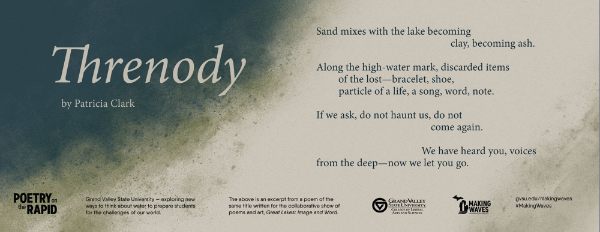Among the promotional placards lining the interior of Rapid buses that cater to the Grand Valley community were pieces with artistic water scenes and prominent titles such as "Fish are Jumping" and "Summers with Martha."
Contained within each was an excerpt from a poem about water, part of a project, "Poetry on the Grand," to help promote the beginning stages of the Making Waves initiative. The project was funded by Making Waves, the College of Liberal Arts and Sciences, and the Center for Scholarly and Creative Excellence.
Placed in a sea of advertising materials conveying straightforward information, the pieces designed by Vinicius Lima, associate professor of graphic design, instantly invited reflection and contemplation.













